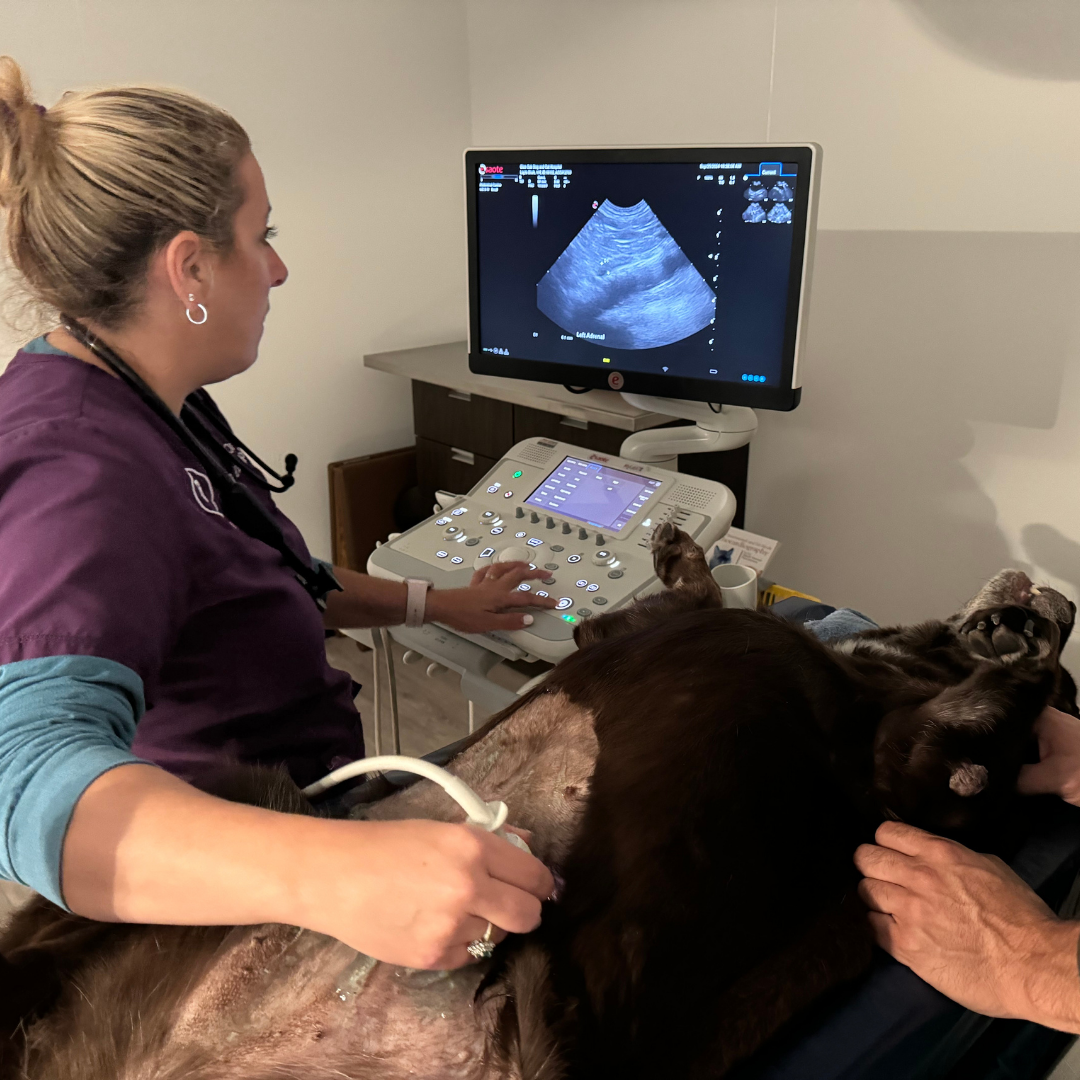 An ultrasound (also called a sonogram) is a non-invasive procedure used to evaluate the internal organs of your pet. Ultrasound examinations can be used to examine the abdominal organs, heart, eyes and reproductive organs. For many abdominal disorders, both ultrasound and X-rays are recommended for optimal evaluation. The X-ray shows the size, shape and position of the abdominal contents, and the ultrasound allows the veterinarian to see inside the organs.
An ultrasound (also called a sonogram) is a non-invasive procedure used to evaluate the internal organs of your pet. Ultrasound examinations can be used to examine the abdominal organs, heart, eyes and reproductive organs. For many abdominal disorders, both ultrasound and X-rays are recommended for optimal evaluation. The X-ray shows the size, shape and position of the abdominal contents, and the ultrasound allows the veterinarian to see inside the organs.
An abdominal ultrasound is indicated to evaluate pets with abdominal symptoms such as vomiting, diarrhea, straining to urinate or urinating blood. This test can also be helpful in cases of reproductive abnormalities, unexplained fever, loss of appetite or weight loss. An abdominal ultrasound is often done if an X-ray, blood tests, or physical examination indicate a problem with an abdominal organ such as the liver, spleen, or pancreas.
Ultrasound is also used for the diagnosis of diseases such as:
- Liver disease
- Kidney Disease
- Adrenal Disease
- Pancreatitis
- GI Cancer
- Bladder Disease
- Splenic Disease
- Cardiac Disease
… and much more.
Ultrasound is non-invasive and can uncover medical issues that radiographs can not. Also, unlike radiographs, there is no additional radiation involved. In most cases, your pet will not need to be sedated and will not experience any pain.
At Glen Oak, Dr. Ashley Rossman has completed an intensive fellowship with renowned veterinary radiologist Dr. Ralph Wieschelbaum DVM, PhD in ultrasound technology and administration, as well as a certification from the University of Illinois.


